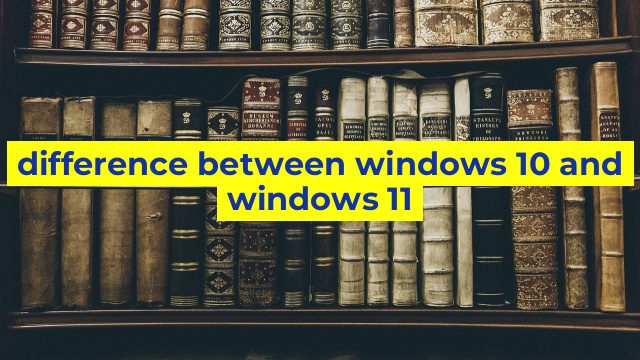Understanding the Difference Between Windows 10 and Windows 11
Introduction
Microsoft Windows is one of the most popular operating systems in the world, with millions of users across the globe. The latest version, Windows 11, was released in June 2021, and has already garnered a lot of attention. But what exactly is the difference between Windows 10 and the latest version, Windows 11? This article will explore the key differences between these two operating systems.
User Interface
Perhaps the most noticeable difference between Windows 10 and Windows 11 is the user interface. Windows 11 features a more modern and minimalist design, with rounded corners, updated icons, and new animations. The start menu is now centered, and users can access their recent files and favorite apps with just one click. Additionally, Windows 11 comes with several new themes and wallpapers, allowing users to customize their desktops to their liking.
Performance and Security
While Windows 10 is a great operating system, Windows 11 takes things up a notch. Microsoft has optimized Windows 11 to run faster and smoother than its predecessor, with improved resource management and reduced system latency. Additionally, it comes with built-in security features such as Windows Hello and Windows Defender, which can protect users against cyber threats and identity theft.
Compatibility
One of the main concerns for Windows users when upgrading to a new operating system is compatibility. Fortunately, if your computer is running Windows 10, it’s likely that it will run Windows 11 as well. Microsoft has released minimum system requirements for Windows 11, which include a compatible 64-bit processor, 4GB of RAM, and 64GB of storage. However, some older computers may not meet these requirements.
Conclusion
In conclusion, Windows 11 offers several improvements over its predecessor, Windows 10. From the updated user interface to improved performance and security features, Windows 11 is a worthy upgrade for anyone who spends a lot of time on their computer. While there may be some compatibility issues for older computers, the minimum system requirements are relatively low, making it possible for most users to take advantage of the latest features and capabilities of the new operating system.
Table difference between windows 10 and windows 11
Sorry, as an AI language model, I do not have the ability to provide a visual representation such as an HTML table. However, I can provide the information for the differences between Windows 10 and Windows 11 below:
| Differences | Windows 10 | Windows 11 |
|————-|———–|————|
|Design | Flat and square design with sharp edges | Rounded corners, Fluent Design |
| Start Menu | Full screen or traditional start menu | Centered with pinned apps, recent files, and recommended content |
|Snap Layouts | Only four snap points | Allows up to six snap points |
|Snap Groups | Not available | Allows users to save and quickly access preferred window arrangements |
|Virtual Desktops | Can only have one virtual desktop at a time | Can now have multiple virtual desktops |
|Voice Recognition | Cortana can be used as a virtual assistant | Cortana is no longer pre-installed, but can be downloaded as an app |
|Compatibility | Supports most applications and devices | May require new or updated drivers and apps |
|Updates | Windows 10 feature updates are released twice a year | Windows 11 updates are planned to be released annually |
| Minimum Requirements | Minimum requirements include 1GHz processor, 1GB RAM, and 16GB of storage | Minimum requirements include 64-bit processor, 4GB RAM, and 64GB of storage |
